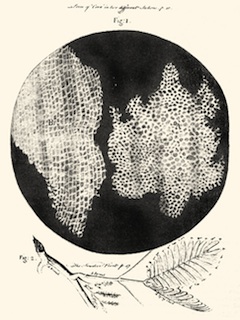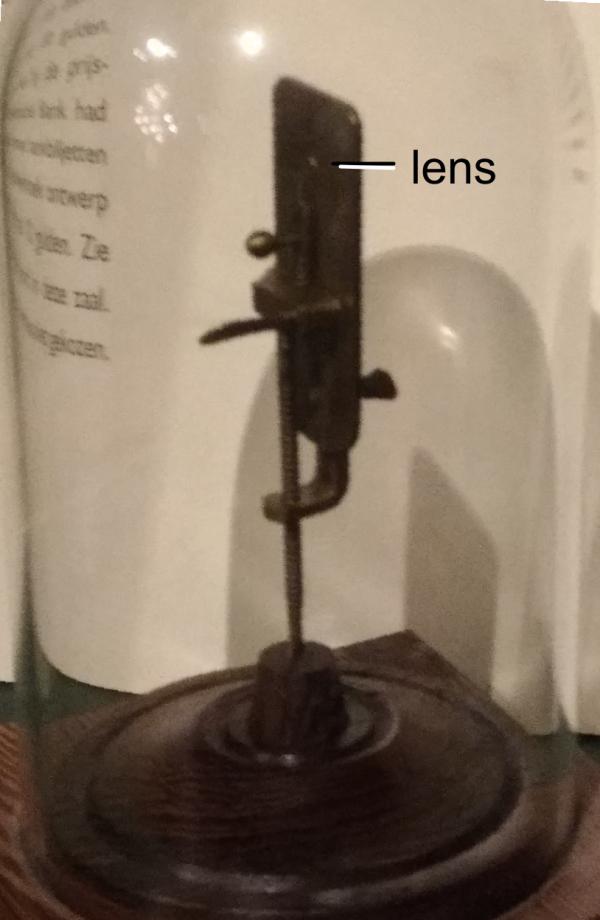Cell Theory Investigation
Evaluating the evidence for cell theory
 The focus of this investigation of cell theory is to see how microscope images provide evidence to support the theory and how some notable exceptions challenge it. Cell theory was an important step in our understanding of living things. It paved the way for Robert Koch and Louis Pasteur to establish the germ theory of disease two hundred years after the establishment of cell theory. This is the basis of much of modern medicine today.
The focus of this investigation of cell theory is to see how microscope images provide evidence to support the theory and how some notable exceptions challenge it. Cell theory was an important step in our understanding of living things. It paved the way for Robert Koch and Louis Pasteur to establish the germ theory of disease two hundred years after the establishment of cell theory. This is the basis of much of modern medicine today.
Three activities guide students through the evidence for cell theory, observation of cells and a consideration of some of the exceptions to the cell theory.
Lesson Description
Guiding Questions
What evidence was there supporting the existence of cells in the 17th century?
What were the technical challenges in getting this evidence?
Are there any organisms that are not made of cells?
Activity 1 Evidence for cell theory
There is a small museum in Delft in the Netherlands where Anton ven Leeuwenhoek lived the whole of his live which houses a small rectangular plate with two screw mechanisms and a minute hole. At first glance it is not obvious how it works. At the time when he used it van Leeuwenhoek was reputed to be one of the finest lens makes in the world. With his simple microscopes he could magnify x250. His friend Reinier de Graaf introduced him to Robert Hook.
Read the Cell theory timeline website, about Robert Hooke and the others involved in the development of the cell theory. Also take a look at Robert Hooke's Micrographia (It's the original script, published in 1665 available free on Project Guthenburg).
A nice concise alternative timeline here
List the evidence of cells and explain how each piece of evidence supports cell theory.
Hints for students:
Include the contributions of:
- Hooke -1st to describe cells
- van Leeuwenhoek - 1st to view living cells, called "animalcules"
- Schwann - all animals are made up of cells
- Schleiden - all plants are made up of cells
- Virchow - cells come from pre-existing cells
Activity 2 Observing cells and estimating their size
One of the best things to do with a microscope is to collect a wide range of specimens, mount them on slides and look at them. In Oxford in the 1630s this is exactly what Robert Hook did. Schleiden and Schwann were also observing plant and animal cells in Germany to gather supporting evidence for their new "Cell Theory". In the Netherlands van Leeuwenhoek was making hundreds of his own microscopes and using them to do all sorts of observations. He even calculated the size of a typical cell to be "rather less than" 8.5 µm, a marvellously accurate result given his tools.
Use the ![]() Student observing cells worksheet below to observe cells and estimate their size, just as this international group of early microbiologists did almost 400 years ago.
Student observing cells worksheet below to observe cells and estimate their size, just as this international group of early microbiologists did almost 400 years ago.
Activity 3 Exceptions to cell theory
Consider the evidence supporting cell theory which has been studied in activities 1 and 2. Answer the questions below.
- How does the multinucleated cytoplasm of fungal hyphae and skeletal muscles bring the cell theory into question?
The cell theory states that cells are the smallest unit of life and that organisms are made of cells. Both skeletal muscle cells and fungal hyphae are made from elongated cytoplasm with more than one nucleus. These structures are a problem for cell theory because they are not strictly made of cells.
- How does Acetabularia, the giant algal cell that can grow up to 10 cm in length and has three distinct body parts, disturb the cell theory?
Cell theory states that organisms are made of cells. Acetabularia is a whole organism and it is larger than a cell. This disturbs the cell theory because it seems to break the rule that all organisms are made of cells by not itself being made of cells.
- "Omnis cellula e cellula" (Cells originate from cells) is what R Virchow stated. But where did the first cells come from?
There is some evidence that organic molecules could form in the 'primordial soup' of the early Earth's atmosphere. Some of these molecules, like RNA or enzymes are thought to be capable of reproducing themselves. Other molecules have properties similar to parts of a membrane. They could form the main parts of a cell.
This is a question which cannot be answered fully by science. It is not possible to observe the process happening, nor to recreate accurately the conditions of the early earth's atmosphere.
Click the eye icon to reveal model answers for activity 3.
The last question is tricky and could lead to a discussion of the limits of scientific knowledge, useful for TOK.
Teachers notes
Robert Hooke's Micrographia - a copy of his original script, published in 1665 has intriguing English spelling and grammar as well as odd syntax from over 300 years ago! An interesting link to language and TOK.
This website (Vanleeuwenhoek.com) includes some excellent extra information about the work of Anton van Leeuwenhoek
This is a great simple microscope simulation from the North Carolina Community Colleges (Thanks to Isabel Reynoso for the suggestion. It takes students through the settings that can be controlled on a microscope and has short guided videos for each one. You can select slides, cange the light intensity, the focus and the magnification.
The website Histology guide has some lovely slides of human tissue and cells. Although the microscope controls are not very reaslistic there are detailed descriptions of the slides making them excellent for learning about the structures of cell, and exceptions to cell theory. This example of Skeletal muscle shows clearly the long cells, the banding of the sarcomeres and the nuclei.
The sheet below ![]() instructions about how to set up microscopes and calculate cells size estimates may be a useful alternative / complement to the activity.
instructions about how to set up microscopes and calculate cells size estimates may be a useful alternative / complement to the activity.
This ![]() Magnification worksheet can be found in the lesson activities Calculating Magnification and Size is a step through worksheet to learn the process of calculating the magnification of images.
Magnification worksheet can be found in the lesson activities Calculating Magnification and Size is a step through worksheet to learn the process of calculating the magnification of images.
To introduce the question, 'where did the first cells come from?', which often arises about Virchow's statement that all cells come from pre-existing cells. This nice explanation from Stated clearly helps; Can Science Explain the Origin of Life?

 IB Docs (2) Team
IB Docs (2) Team
